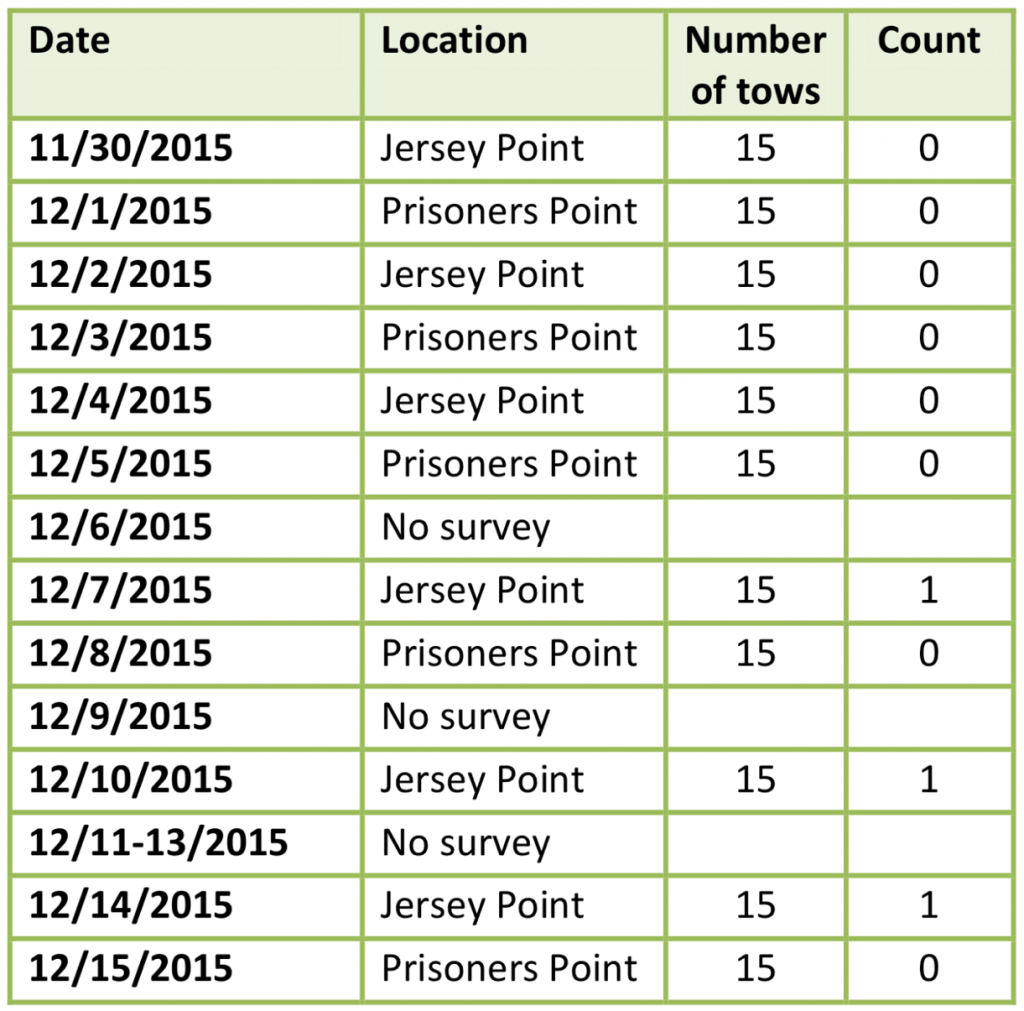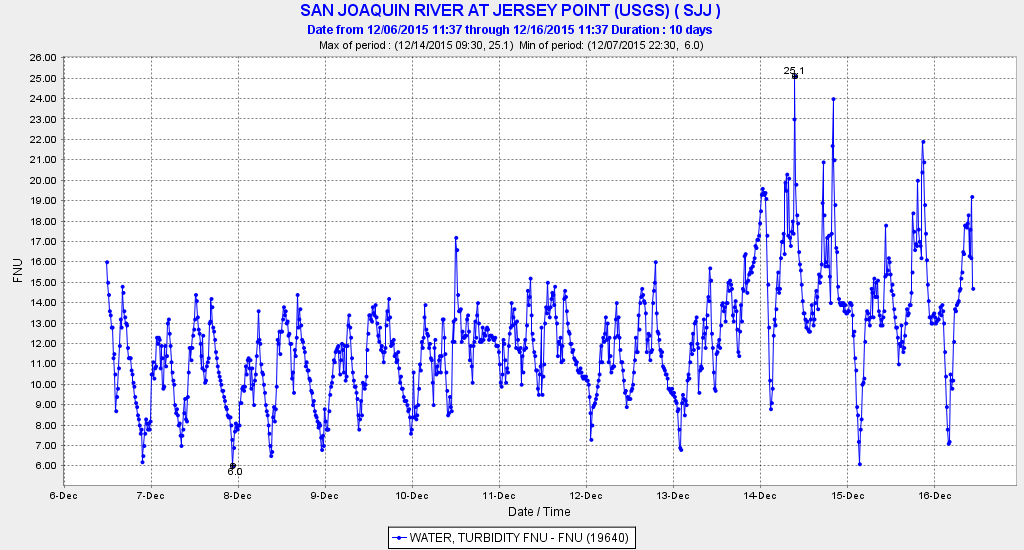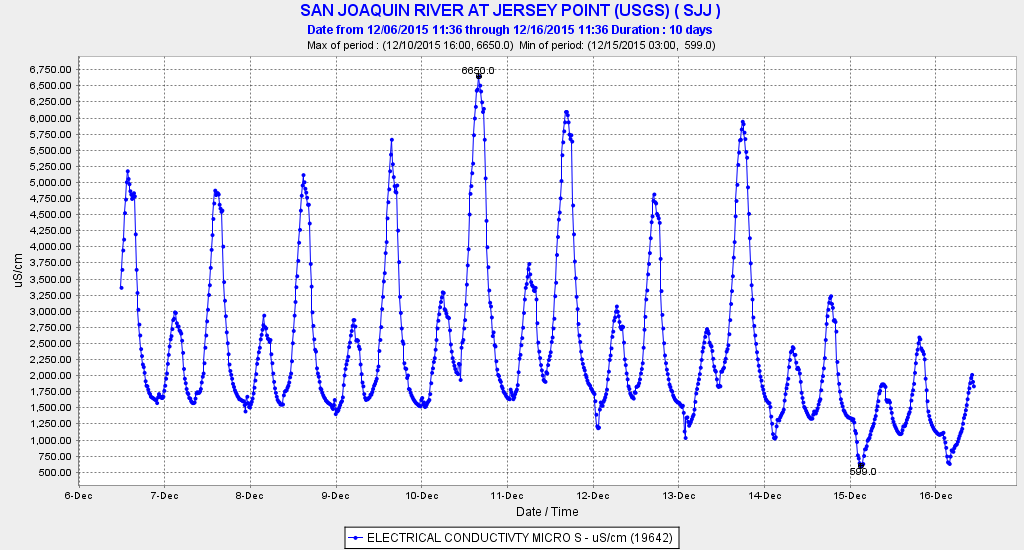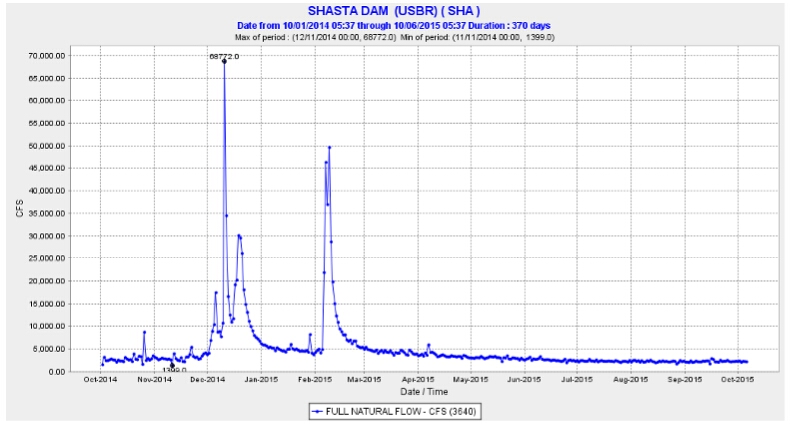The US Fish and Wildlife Service’s early winter survey1 recently detected the first adult Delta Smelt of the water year in the Delta at Jersey Point on the lower San Joaquin River (Figure 1). The number collected in the survey through December 15th is 3, compared to 26 for the same period last year. Their appearance is on schedule and likely related to the first storm flow of the winter (Figures 2 and 3), and the freshening of the Delta (Figure 4).
Monthly Archives: December 2015
More on Spill
In a recent post I suggested “spill” (targeted reservoir releases) to enhance salmon production in Central Valley rivers. Well, it is now time to employ spill to help Winter Run and Spring Run Chinook salmon in the upper Sacramento River below Shasta near Redding. Waiting for El Niño to help these fish may be too late. Confidence and early indications that El Niño will come this winter should make the necessary commitment for spill now more palatable. Spill releases could have already been made from Shasta Reservoir with these recent storms to support emigration of young salmon from the spawning and rearing reach.
After the salmon spawning, irrigation, and water transfer season ended in October, there have only been minimum flows and no spills to enhance young salmon emigration. Flow from Shasta-Keswick (river mile 302) has remained near the minimum requirement of 4000 cfs (Figure 1).
Recent Storms – December 2015
The recent storms have sharply increased flow in the Sacramento River downstream of the spawning reach at Bend Bridge at river mile 258 (Figure 2) below the input of four large creeks entering the Sacramento River below Redding (Figure 3). Inflow to Shasta Reservoir has nearly quadrupled during the two storms, reaching 8,000-10,000 cfs. A prescriptive “spill” release of 5-10% of inflow (500-1000 cfs) is needed. That would raise Keswick releases to about 5000 cfs, which would help stimulate emigration from the spawning reach into the higher flow reach below the tributaries, and down into and through the Delta.
December 2003 Case Study and Precedent
December 2003 had similar circumstances. Screw trap catch of Winter Run salmon at Knights Landing (RM 90) had a sharp increase coincident with flow increases in December 2003 (Figure 4). Spill in December 2003 (Figure 5) helped increase the river flow.
Concern for Young Salmon in the Delta
Higher freshwater inflows from the storms in 2015 have already pushed the Low Salinity Zone out of the Delta into Suisun Bay. Winter Run and Spring Run salmon (as well as Late Fall smolts and Fall Run fry) are likely now entering the Delta in large numbers (comparable monitoring results from 2003-4 are shown in Figure 6). Spill wouldl help move fish through the Delta and west to the Bay. The Delta Cross Channel remains open, allowing the emigrating salmon to spread into the Central Delta. This increases the need for spill to keep these fish moving west before the DCC is closed and south Delta exports divert freshwater inflow and emigrating salmon away from the Bay and toward the Delta pumps.
Spill is also needed from other reservoirs on the Feather, Yuba, and American Rivers that have also received significant inflow during the recent storms. Spill from these reservoirs is needed to stimulate migration of young salmon from their tailwaters as well as to contribute more to the combined Delta inflow and outflow.
Though it is a hard decision not to store all of the inflow from these first storms of the season in reservoirs, releasing 5-10% as spill would go a long way to help saving the wild endangered salmon that depend on the early winter flows.

Figure 1. Flow releases to Sacramento River from Keswick Reservoir fall 2015. Minimum prescribed outflow to Sacramento River is approximately 4000 cfs in drought years like 2015. Keswick Dam is at rivermile 302, nine miles below Shasta Dam.
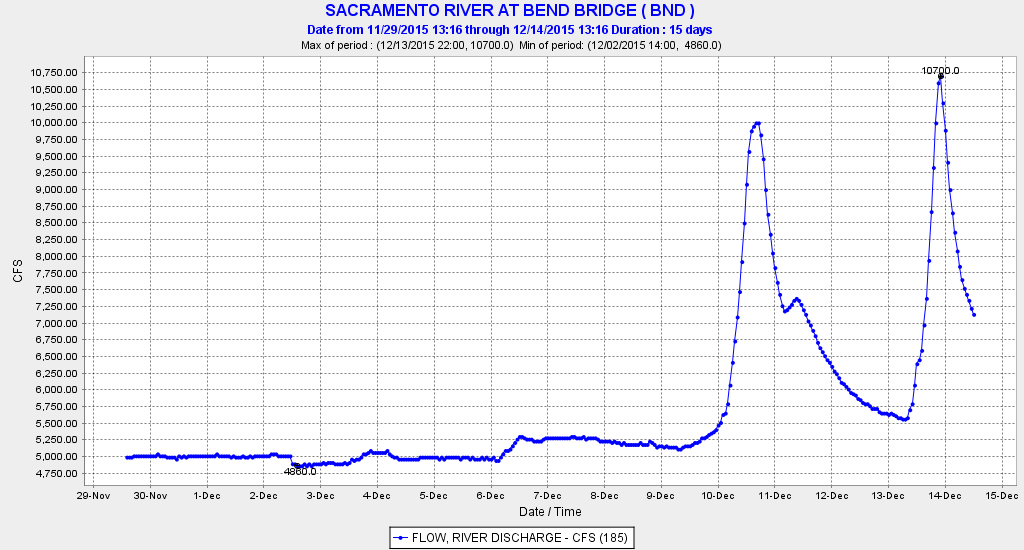
Figure 2. Flow in the Sacramento River at Bend Bridge (RM 258) 44 miles below Keswick Dam fall 2015. Flow spikes from recent storms come from local tributary creeks upstream of Bend Bridge.
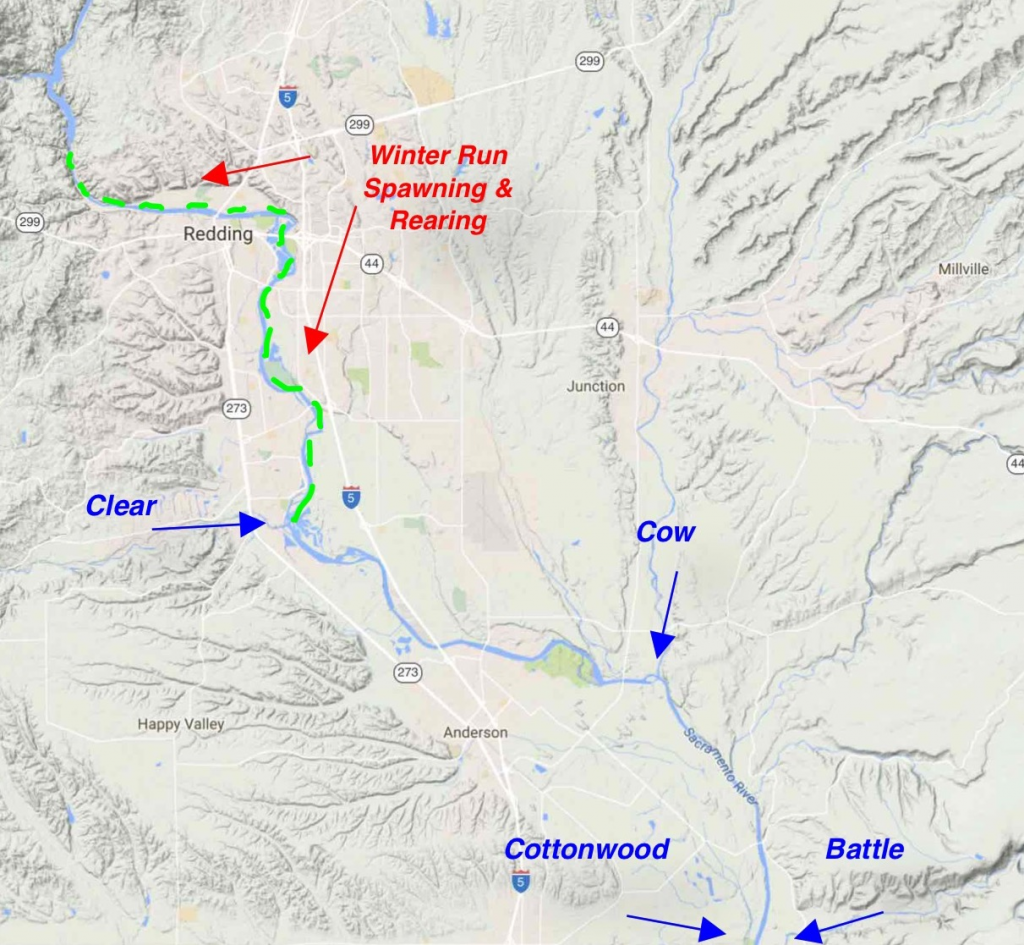
Figure 3. Location of Winter Run spawning and rearing reach (green hatched line) below Keswick Dam (RM 302) near Redding, CA. Four major tributary creek inputs are shown below Redding. The mouths of Cottonwood and Battle Creeks are about RM 270.
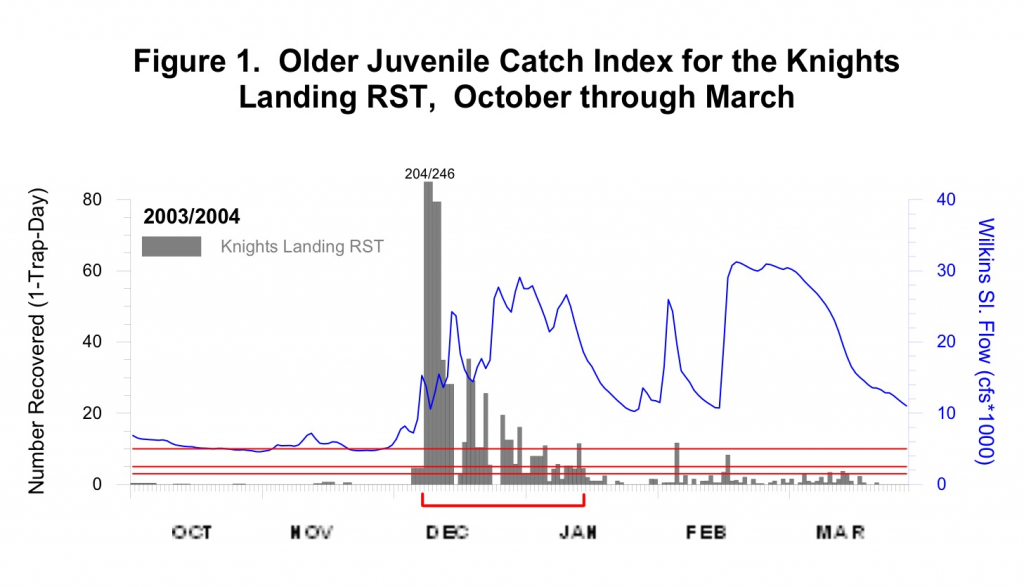
Figure 4. Catch index of older juvenile (non-fry) in Knights Landing (RM 90) rotary screw trap Oct 2003-Mar 2004. Source: http://www.science.calwater.ca.gov/pdf/ewa /support_docs_110804/Salmon%20Criteria%20Figures%201_2_Chappell.pdf
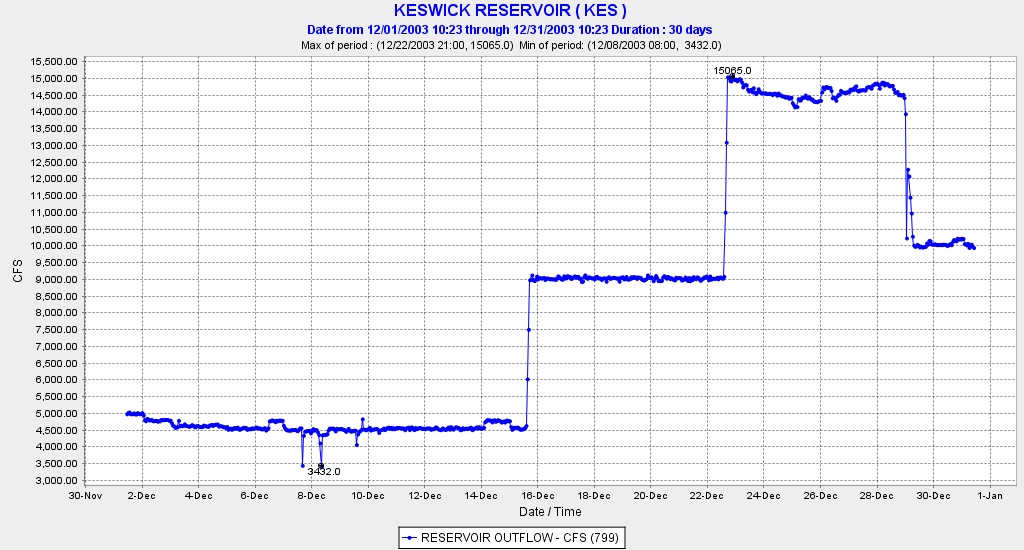
Figure 5. Flow releases to Sacramento River from Keswick Reservoir fall 2003. Releases were approximately doubled to 9000 cfs at mid-month, ostensibly to help stimulate young salmon emigration and allow greater Delta exports 1.
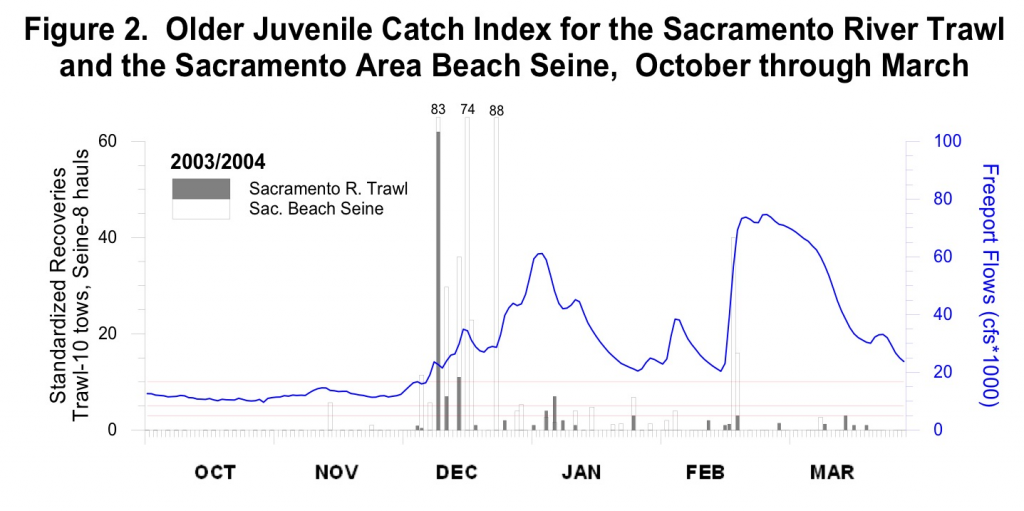
Figure 6. Catch index of older juvenile (non-fry) in trawls and seines in the Sacramento River near Sacramento, Oct 2003-Mar 2004. Source: http://www.science.calwater.ca.gov/pdf/ewa /support_docs_110804/Salmon%20Criteria%20Figures%201_2_Chappell.pdf
- High exports in December03-January04 did result in substantial counts of juvenile Winter Run salmon at South Delta Fish Salvage Facilities during the period. ↩
Spill and Salmon Survival
In an earlier post, I suggested “spill” to help recover salmon in the Central Valley. Spill is nomenclature used for reservoir releases. In this case I refer to spill as reservoir releases to help juvenile salmon emigrate from spawning reaches below dams to the ocean. On the Columbia River, “spill” refers to reservoir releases around hydropower turbines usually through spillways. Such spills have been used successfully on the Columbia River to avoid turbine passage that may kill young salmon and to create flows through and below reservoirs to reduce young salmon mortality by shortening their emigration time. On the Sacramento and other Central Valley rivers, “spill” releases can go through hydropower turbines because young salmon start their emigration below the dams. Young salmon have been found to emigrate during flow pulses, with survival directly related to the amount of flow.
More “spill” below the rim dams is needed in the Central Valley to increase survival of naturally produced (wild) salmon and steelhead. Spills help young salmon emigrate from tailwater spawning and rearing reaches below dams to the Delta, Bay, and ocean. Both timing and magnitude are important. Timing relates to when the young salmon are ready to migrate and to natural flow pulses in the Valley. Magnitude is simply how much flow, which relates to precipitation and available reservoir storage supply.
Timing
Most of the Chinook salmon runs emigrate to the San Francisco Bay-Delta as fry soon after hatching. Some migrate as sub-yearling fingerlings and smolts1 while a few migrate as yearling smolts.
Winter Run Salmon
Winter Run hatch in late summer and early fall in the Sacramento River below Shasta and Keswick reservoirs. They usually emigrate as fingerlings and pre-smolts to the Delta when the river cools, especially during the first flow pulses in late fall and early winter. In drier years they may not emigrate until February or even March. Generally they move down to the Delta in the first flow pulse in December (Figure 1).
Late Fall Run Salmon
Late Fall Run also hatch in winter in the Sacramento River below Shasta and Keswick reservoirs. They usually emigrate as yearling smolts in late fall or early winter, at the same time as the Winter Run. Unlike Winter Run, they are often fully developed smolts and thus migrate quickly to the ocean.
Spring Run Salmon
Spawned in early fall, Spring Run hatch and migrate as fry and fingerlings with the first pulse of flow in late fall and early winter. Some migrate as presmolts and smolts in spring.
Fall Run Salmon
Spawned in fall, Fall Run hatch and emigrate as fry in winter during flow pulses. Some emigrate as fingerlings and pre-smolts in spring.
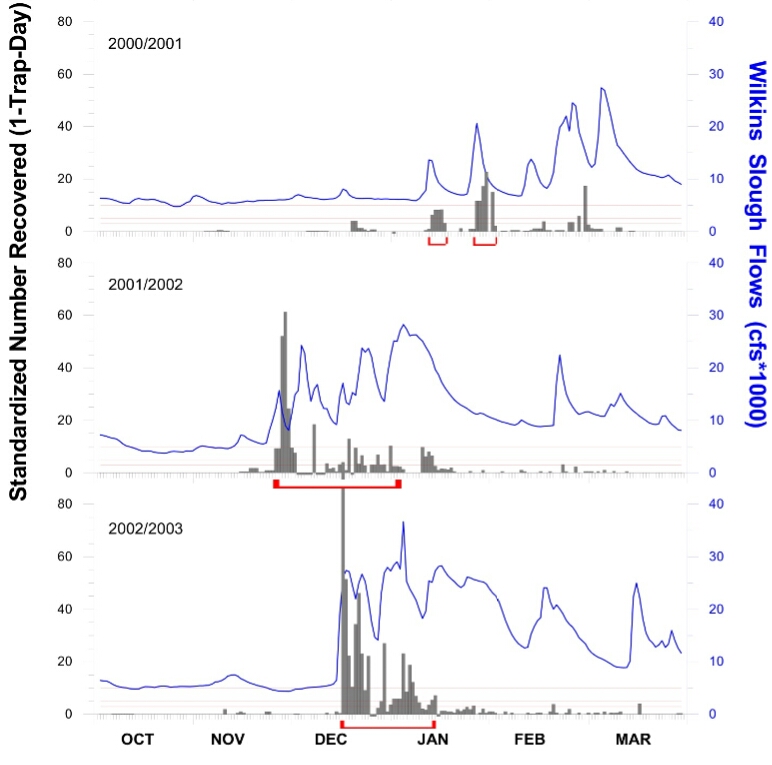
Figure 1. Older Juvenile Catch Index for the Knights Landing rotary screw trap October through March 2000-2003. Older juveniles are generally Winter Run and Late Fall Run. (Source: http://www.science.calwater.ca.gov/pdf/ewa/support_docs_110804/ Salmon%20Criteria%20Figures%201_2_Chappell.pdf)
Steelhead
Steelhead spawn in winter and spring and emigrate as smolts after rearing in Valley rivers for one to three years. They migrate to the ocean during winter and spring flow pulses.
Spill Recommendations
To illustrate my recommendations, I focus on 2015 – a drought year with very limited reservoir supply and managed spill potential. Such years would be considered worst case scenarios for applying spill prescriptions. Yet despite limited potential in 2015, there were opportunities with the available supplies and precipitation to provide spill that would have substantially benefited salmon. Below are charts of flows for drought water year 2015 that depict the effects of two storm periods on Delta inflow and outflow. Delta inflow came primarily from runoff in un-dammed tributaries. Figure 2 depicts Delta inflow at Freeport with two distinct pulses of storm flow. These same flow pulses are apparent as Delta outflow to the Bay in Figure 3.
Below Shasta-Keswick in the lower Sacramento River, there was no winter storm flow (Figure 4). There were only two small managed flow increases of about 1000 cfs for three or four days each (a total of about 15,000 acre-ft), because Shasta held nearly all of its inflow from the two storm periods (Figure 5). Shasta inflow reached over 20,000 cfs for six days in each of the storms (Figure 6). Out of approximately 1,500,000 acre-ft of new storage inflow, Reclamation released only15,000 acre-ft (1%) of storm inflow for salmon.
A spill prescription of just 5% of inflow below Shasta-Keswick in the primary nursery for Winter Run salmon could have provided an increased 3000-4000 cfs of “spill” for seven days, instead of the 1000 cfs increases. Instead of going into the irrigation season at 2.72 million acre-ft, in storage, Shasta would have started at 2.67 million acre-ft. Given the potential benefit of the flow releases, this prescription even for a drought year is more than reasonable.
This example is for the fourth year of drought, when the reservoir began the winter at only 25% of capacity. In wetter years when storage is over 50% capacity, spills of 10% should be considered.
The same circumstances and potential benefits occur below other large Central Valley storage reservoirs, especially Oroville Reservoir on the Feather River and Folsom Reservoir on the American River. Spills of 5% in low storage years and 10% in higher storage years are reasonable prescriptions for their depressed salmon and steelhead populations.

Figure 4. Reservoir releases from Shasta-Keswick in water year 2015. Only two small releases were made in the storm periods.
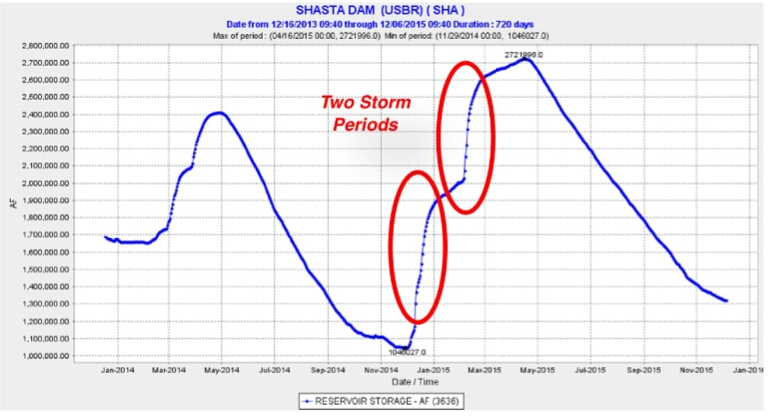
Figure 5. Shasta Reservoir storage in water year 2015. The two storm periods added nearly 1.5 million acre-feet of water to the reservoir.
- Smolts are larger (3-6 inches in length) juveniles physiologically ready for entry to salt water. ↩

